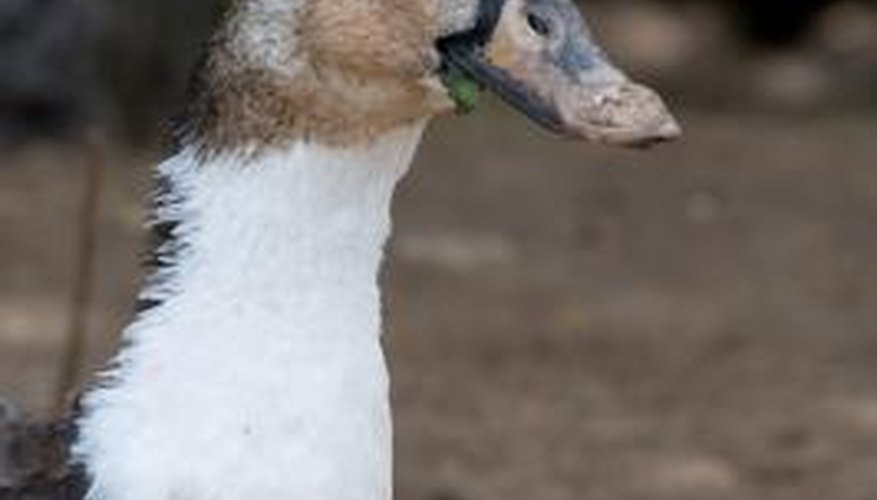Runner ducks, also known as Indian runner ducks, are common farmyard pets and egg producers. Runner ducks are tall and carry themselves upright. They come in a variety of colours including whites, greys, tans and browns. The ducks also sport diverse plumage patterns. Runner ducks grow quickly and produce a large number of eggs, compared to other breeds. It is relatively easy to determine the gender of an adult runner duck by looking at its plumage and listening to its interesting vocalisation.
Wait to sex your runner ducks until they are 6 to 8 weeks old. At this point, a runner duck will have most of its adult plumage and will be making adult vocalisation. Take the runner duck to a professional, such as a veterinarian, if you need to determine its gender before it reaches maturity.
- Runner ducks, also known as Indian runner ducks, are common farmyard pets and egg producers.
- Take the runner duck to a professional, such as a veterinarian, if you need to determine its gender before it reaches maturity.
Listen to your runner duck as it quacks. Female runner ducks have a much louder and more distinct quack than male runner ducks. Male runner ducks sound like they are whispering or rasping.
Look at your runner duck's tail plumage. Full adult plumage may not develop until runner ducks are 4 to 5 months old. Adult males develop drake feathers at the top of their tails. These feathers are easily distinguished due to their upward curl. Female runner ducks do not develop drake feathers.
- Listen to your runner duck as it quacks.
- Female runner ducks do not develop drake feathers.
Look at the size of the runner duck compared to other runner ducks. Male ducks are often larger than females. Female runner ducks may have slimmer bodies and smaller or slimmer beaks and feet.
Look at the colours of the duck. Male runner ducks are sometimes more boldly coloured than females. Female ducks may appear to have muted or subdued colours and patterns.
TIP
A veterinarian can determine gender through a process called vent sexing. This involves looking at the duck's internal genitalia.
WARNING
Improper vent sexing can cause injury to the runner duck.
